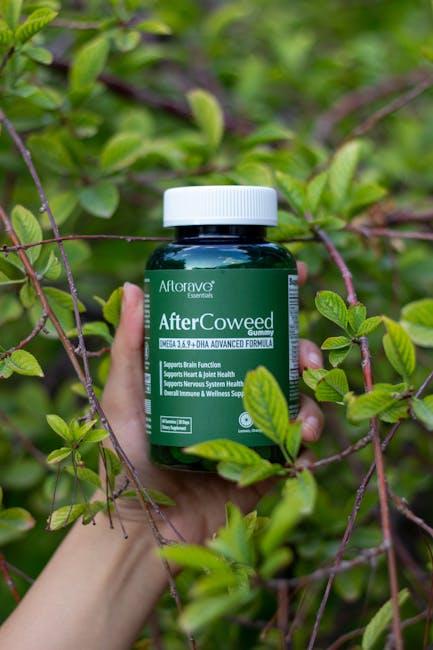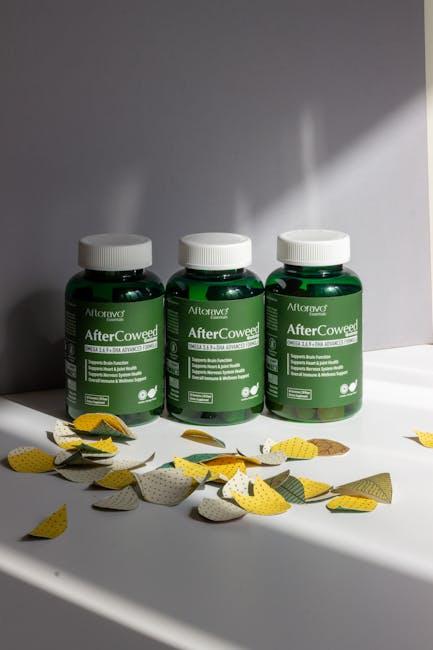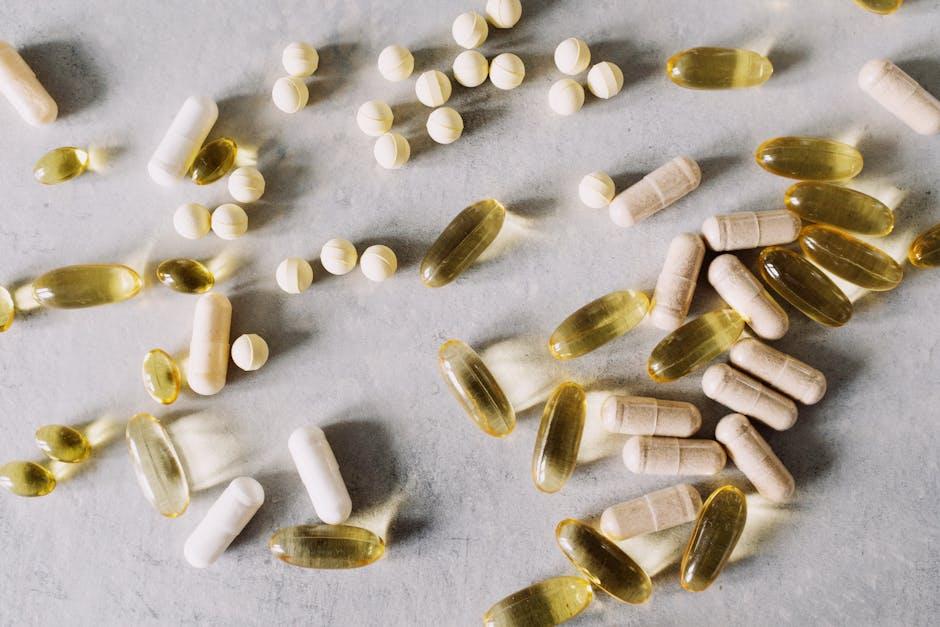In the vast and ever-evolving world of wellness, probiotic supplements have carved out a fascinating niche, promising to nurture our gut health and, by extension, overall well-being. But with an abundance of options lining the shelves—each boasting different strains, potencies, and benefits—selecting the right probiotic can feel like navigating a labyrinth. This article aims to demystify the choices, offering a clear and balanced guide to help you uncover the probiotic supplement best suited to your unique needs, ensuring that your journey toward a healthier microbiome is both informed and effective.
Table of Contents
- Understanding the Different Strains and Their Benefits
- Evaluating Potency and Viability for Maximum Effectiveness
- Choosing the Right Formulation for Your Lifestyle
- Navigating Labels and Identifying Quality Indicators
- Tailoring Probiotic Choices to Your Health Goals
- Q&A
- Final Thoughts

Understanding the Different Strains and Their Benefits
Probiotic strains each carry unique benefits, making it essential to understand which ones will align best with your health goals. For instance, Lactobacillus acidophilus is renowned for supporting digestive health and enhancing nutrient absorption, while Bifidobacterium bifidum works primarily to balance the gut flora and strengthen immune response. Choosing a supplement with a diverse blend of strains can offer broader health benefits, but targeting a specific strain is often more effective for addressing particular concerns, such as lactose intolerance or antibiotic recovery.
- Lactobacillus rhamnosus: Helps with diarrhea prevention and gut barrier function
- Bifidobacterium lactis: Supports immune system and reduces inflammation
- Saccharomyces boulardii: A beneficial yeast aiding in diarrhea control and gut infections
- Streptococcus thermophilus: Enhances lactose digestion and reduces gut inflammation
| Strain | Primary Benefit | Ideal Use |
|---|---|---|
| Lactobacillus acidophilus | Digestive support | General gut health |
| Bifidobacterium bifidum | Immune boosting | Immune system support |
| Saccharomyces boulardii | Infection control | Antibiotic side effects |

Evaluating Potency and Viability for Maximum Effectiveness
When considering probiotic supplements, potency is key to ensure you receive a sufficient amount of live microorganisms that can truly benefit your gut health. Potency is typically measured in colony-forming units (CFUs), which indicate the number of viable bacteria in each dose. It’s important to select products that guarantee a high CFU count not just at the time of manufacture but also through their expiration date. This ensures that the probiotics remain effective after storage and handling. Keep in mind, higher CFUs don’t always mean better results—different strains have varying efficacy at different doses.
Equally crucial to potency is the viability of the probiotics, or how many bacteria survive until they reach your intestines. Factors like stomach acid, temperature, and moisture can reduce the number of live bacteria by the time they get to work. Look for supplements that use enteric-coated capsules or spore-forming strains known for their resilience. Here’s a quick guide to key features that enhance viability:
- Encapsulation Technology: Protects probiotics from harsh stomach acids.
- Freeze-Dried Formulas: Preserve live cultures during shelf life.
- Proper Storage Instructions: Refrigeration or stable ambient temperatures prevent degradation.
| Feature | Benefit for Viability |
|---|---|
| Enteric Coating | Delivers more live bacteria to the gut |
| Spore-Forming Strains | Survive harsh stomach environments |
| Moisture-Proof Packaging | Maintains effective potency during storage |
| Expiration Date Guarantees | Confirms potency through shelf life |

Choosing the Right Formulation for Your Lifestyle
Finding a probiotic that aligns seamlessly with your daily routine ensures you never miss a dose and maximize benefits. If you lead a busy lifestyle, capsules or tablets offer convenience and precision in dosing, making them perfect for on-the-go consumption. For those who prefer a more natural or food-based approach, probiotic-rich powders or fermented foods might fit better, blending easily into smoothies or meals. Also consider any dietary restrictions or preferences such as vegan-friendly options or supplements free from allergens like gluten or dairy.
Different formulations also vary in their delivery mechanisms and potency. Some probiotics are enteric-coated to survive stomach acid, while others combine prebiotics to nourish the good bacteria. Here’s a quick glance at common formats to help identify what suits your lifestyle best:
| Formulation | Best For | Key Benefit |
|---|---|---|
| Capsules/Tablets | Busy schedules | Convenience and consistent dosing |
| Powders | Smoothie lovers, customizable doses | Easy mixing and flexible intake |
| Liquid Drops | Kids and those with swallowing issues | Fast absorption and adjustable dose |
| Fermented Foods | Whole-food seekers | Natural probiotic plus nutrients |

Navigating Labels and Identifying Quality Indicators
When examining probiotic labels, it’s essential to go beyond the fancy packaging and focus on the core details that truly matter. Look for the strain-specific names—generic labels like “probiotics” don’t cut it. Each strain (e.g., Lactobacillus rhamnosus GG or Bifidobacterium lactis) has unique benefits, so identifying them is key to matching your health goals with the supplement. Next, check the colony-forming units (CFUs) count at the time of manufacture and, more importantly, at the expiration date, ensuring the product maintains effective potency throughout its shelf life.
Quality indicators extend beyond what’s inside the capsule. Certifications and third-party testing seals provide added assurance that the product lives up to its claims without contaminants or harmful additives. Below is a quick reference table highlighting some common quality seals and their significance:
| Certification | What It Ensures |
|---|---|
| USP Verified | Purity, potency, and label accuracy |
| NSF Certified | Manufactured in GMP-compliant facilities |
| Non-GMO Project | Free from genetically modified organisms |
| Organic Certified | Produced without synthetic pesticides |
- Storage instructions—some probiotics require refrigeration for optimal viability.
- Expiration date—always choose products with a clear and reasonable shelf life.
- Additional ingredients—be wary of unnecessary fillers or allergens.

Tailoring Probiotic Choices to Your Health Goals
Aligning your probiotic choices with your specific health objectives ensures that you reap the maximum benefits. Different strains of probiotics target different areas—whether it’s digestive health, immune support, or mood regulation. For example, Lactobacillus acidophilus is renowned for enhancing digestion and nutrient absorption, while Bifidobacterium bifidum can fortify your immune defenses. Before selecting a supplement, identify your primary goal and look for the strains with clinically proven effects in that area.
Customizing your probiotic intake can also mean varying the dosage and delivery method to fit your lifestyle and needs. Capsules, powders, and fermented foods all offer different absorption rates and convenience. Consider these factors:
- Daily Dosage: Ranges typically between 1 billion to 10 billion CFUs based on your health focus.
- Strain Diversity: Some formulations combine multiple strains for broader benefits.
- Delivery Form: Choose based on your routine—capsules for ease, powders for mixing, or fermented foods for a natural option.
- Prebiotic Content: Fuels probiotic survival and efficacy.
| Health Goal | Recommended Strain(s) | Typical Dosage (CFUs) |
|---|---|---|
| Digestive Health | L. acidophilus, B. lactis | 5-10 Billion |
| Immune Support | B. bifidum, L. rhamnosus | 10 Billion |
| Mental Wellness | L. helveticus, B. longum | 1-5 Billion |
| Women’s Health | L. reuteri, L. crispatus | 5-10 Billion |
Q&A
Q&A: Probiotic Supplements – How to Choose the Right One
Q1: What exactly are probiotic supplements?
A1: Probiotic supplements are products containing live beneficial bacteria designed to support the balance of good microbes in your gut. Think of them as friendly microscopic allies that help maintain digestive health and overall well-being.
Q2: Why should I consider taking a probiotic supplement?
A2: Our gut flora can be disrupted by factors like antibiotics, poor diet, stress, and illness. Probiotic supplements aim to restore that balance, potentially easing digestion, boosting immunity, and even influencing mood and skin health.
Q3: With so many options available, how do I choose the right probiotic?
A3: Choosing the right probiotic starts with identifying your health goals. Different strains serve different purposes — for example, Lactobacillus rhamnosus may help with diarrhea, while Bifidobacterium strains could ease constipation. Look for products that specify strain types and research-backed benefits.
Q4: Does the number of bacteria in the supplement matter?
A4: Yes, but more isn’t always better. Probiotics are measured in CFUs (colony-forming units). A typical effective dose ranges from 1 billion to 10 billion CFU per serving, but some specific conditions may need higher doses. It’s essential to follow guidelines or consult a healthcare professional.
Q5: Should I prefer probiotic supplements over probiotic foods?
A5: Both have their perks. Probiotic-rich foods like yogurt, kefir, and kimchi provide live cultures naturally, along with additional nutrients. Supplements offer targeted strains in controlled amounts — ideal for specific health concerns or when dietary sources aren’t practical.
Q6: What should I look for on the label?
A6: Check that the label lists the probiotic genus, species, and strain — not just “probiotics.” Also, note the CFU count at the time of expiration, storage instructions, and whether the product requires refrigeration. Transparency and quality certifications are good signs.
Q7: Are there any side effects or risks?
A7: Probiotics are generally safe for most people, but some may experience mild digestive discomfort initially. Those with weakened immune systems or serious health conditions should consult a doctor before use.
Q8: How long does it take to notice probiotic benefits?
A8: Results vary by individual and condition. Some people notice improvements within days; others may need weeks. Consistency is key, and pairing probiotics with a balanced diet enhances effectiveness.
Q9: Can I take probiotics alongside other supplements or medications?
A9: Usually yes, but it’s wise to check with a healthcare provider, especially if you’re on antibiotics or immunosuppressants, to avoid interactions or reduced effectiveness.
Q10: What about prebiotics — do I need those, too?
A10: Absolutely! Prebiotics are non-digestible fibers that feed your beneficial bacteria. Some supplements combine probiotics and prebiotics (synbiotics) for synergistic support. Including fiber-rich foods in your diet also helps nourish your gut flora.
Choosing the ideal probiotic is like matchmaking — finding the right strains, dose, and delivery method to suit your unique microbiome needs. Armed with knowledge and a bit of patience, you can navigate the probiotic aisle with confidence and nurture your gut’s happy balance.
Final Thoughts
Choosing the right probiotic supplement is more than just picking a bottle off the shelf—it’s about finding a companion that supports your unique digestive journey. By understanding the strains, potency, and your personal health needs, you’re empowered to make an informed decision that nurtures balance from within. Remember, probiotics are a small but significant piece of the wellness puzzle, so approach your choice with curiosity and care. After all, a happy gut often sets the tone for a happier you.














Leave feedback about this